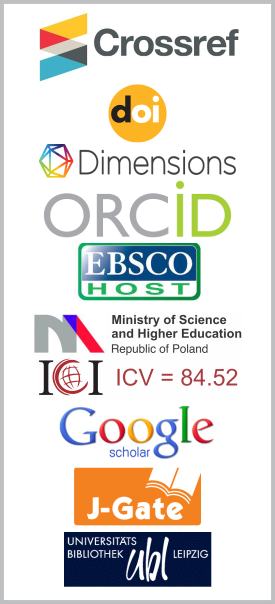Estimation of Hydraulic Parameters from Vertical Electrical Resistivity Sounding
DOI:
https://doi.org/10.26713/jims.v9i2.732Keywords:
Estimation, Hydraulic parametersAbstract
This study presents the assessment of the groundwater potential in Iyesi, Ota, southwestern Nigeria. Thirty (30) vertical electrical soundings (VESs) were conducted using Schlumberger array with a maximum half-current electrode spacingDownloads
References
G. Archie, The electrical resistivity log as an aid in determining some reservoir characteristics, Petroleum transactions of the American Institute of Mineralogical and Engineers 146 (1942), 54 – 62.
G. Archie, Introduction to petrophysics of reservoir rocks, American Association of Petroleum Geologists Bulletin s (1950), 943 – 961.
J.J. Breusse, Modern geophysical methods for subsurface water exploration, Geophysics 28 (1963), 633 – 657.
D.C. Carmen, Fluid flow through a granular bed, Transaction Institute of Chemical Engineering 15 (1937), 150 – 157.
D.C. Carmen, Flow of Gases through Porous Media, Academic Press, New York (1956), 182 p.
European Association of Exploration Geophysicists, Compagnie Generale de Geophysique, Master curves for electrical sounding, 2nd revised edition (1963), https://books.google.co.in/books/
about/Master_Curves_for_Electrical_Sounding.html?id=g1BmPAAACAAJ&redir_esc=y.
M.B. Dobrin, Introduction to Geophysical Prospecting, 2nd edition, McGrow-Hill, New York (1960), 446 p.
R.A. Freeze and J.A. Cherry, Groundwater, Prentice Hall Inc., Englewood Cliffs, New Jersey (1979), 7 p.
A. Ginzburg, Resistivity surveying, Geophysical Surveys 1 (1974), 325 – 355.
J. Kozeny, Ueber kapillare leitung des wassers im boden, Sitzungsberichte Akademie der Wissenschaften Wien 136 (1927), 271 – 306.
J. Kozeny, Hydraulics, Springer, Vienna (1953), 546 – 549.
P.G. Nutting, Physical analysis of oil sands, American Association of Petroleum Geologist Bulletin 14 (1930), 1337 – 1349.
Downloads
Published
How to Cite
Issue
Section
License
Authors who publish with this journal agree to the following terms:- Authors retain copyright and grant the journal right of first publication with the work simultaneously licensed under a CCAL that allows others to share the work with an acknowledgement of the work's authorship and initial publication in this journal.
- Authors are able to enter into separate, additional contractual arrangements for the non-exclusive distribution of the journal's published version of the work (e.g., post it to an institutional repository or publish it in a book), with an acknowledgement of its initial publication in this journal.
- Authors are permitted and encouraged to post their work online (e.g., in institutional repositories or on their website) prior to and during the submission process, as it can lead to productive exchanges, as well as earlier and greater citation of published work.




